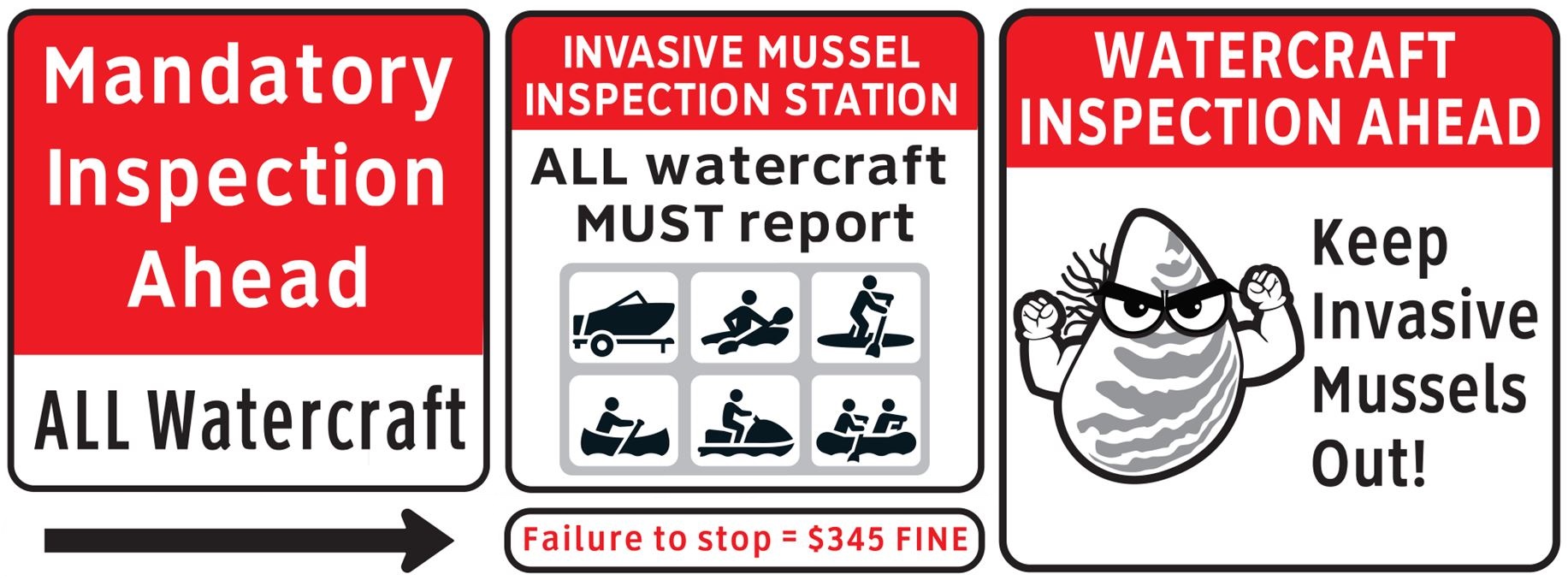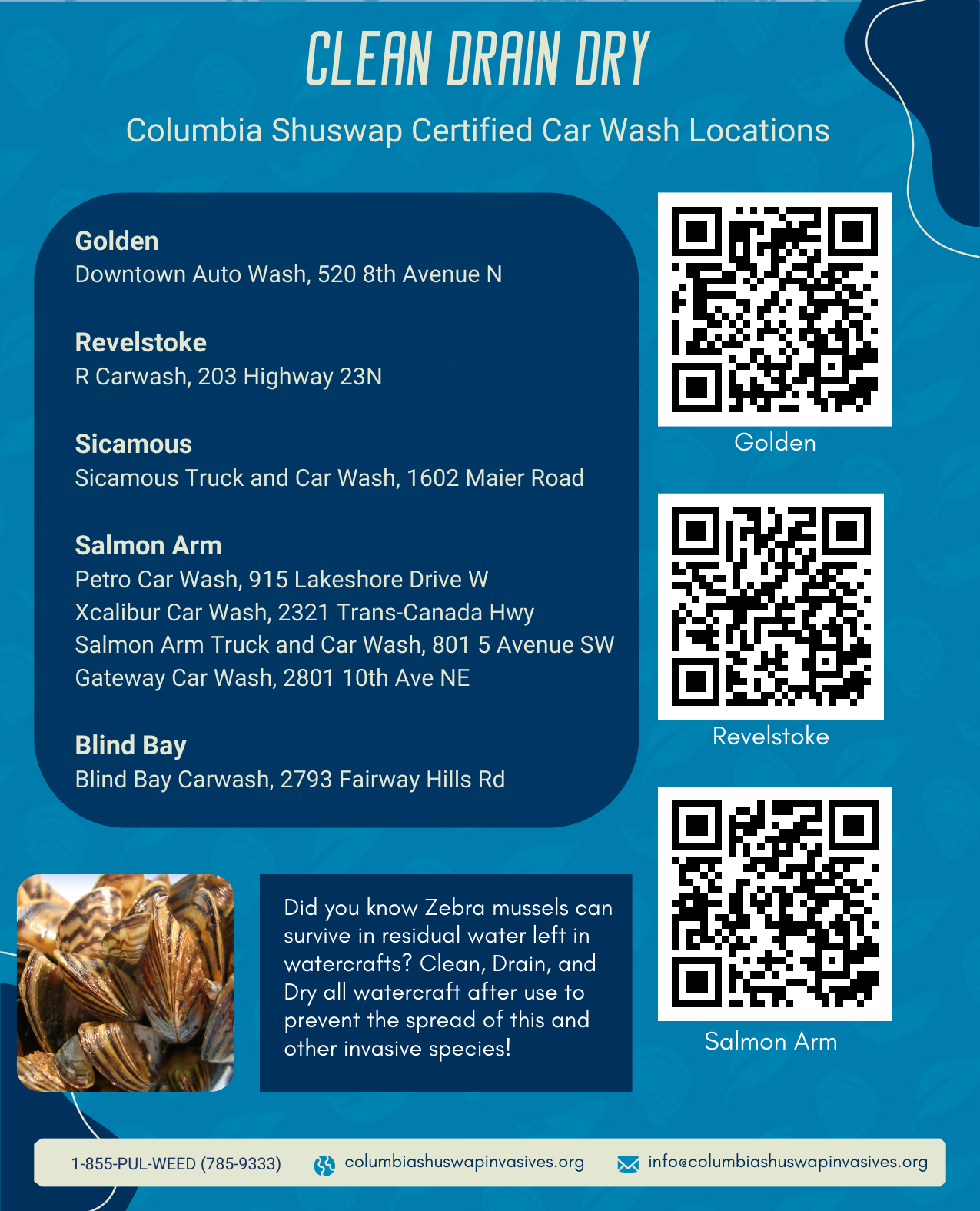What can you do?
- Clean Drain Dry- More than just boats
- Watercraft Inspection Stations and Decontamination Procedure – Columbia River Watershed
- Pull the Plug
- Reporting / RAPP line
CLEAN DRAIN AND DRY: More than just boats!
1. Clean off all plant parts, animals, and mud from all WATERCRAFT and equipment (including: kayaks, canoes, standup paddleboards, swimming/ water toys, swimsuits, boots, waders, fishing gear). Use power wash station if available.
2. Drain onto land all items that can hold water (e.g. buckets, wells, bilge, and ballast).
3. Dry all items completely before launching into another body of water.
Watercraft Inspection Stations
Bringing a watercraft into BC? It is mandatory to stop at Watercraft Inspection Stations
Images: Invasive Mussels BC Watercraft Inspection Stations
Do not launch your boat into BC waters unless it has been inspected.
If you require an inspection call 1 877 952 7277
Marinas, boat brokers and boat haulers, please see the Aquatic Industry Best Management Practices document here.
Pull the Plug:
Effective May 17 2024 in B.C. it is now illegal to transport your watercraft with the drain plug still in place. Before transporting a boat or other watercraft, owners/operators must remove the drain plug and drain all water on dry land including all internal compartments such as ballasts, bilges, and live wells.
Decontamination in the Columbia Watershed
The provincial government of B.C. has introduced new requirements and guidance for the Columbia Watershed specifically:
1. Handle fish carefully.
2. Clean Drain Dry all watercraft, equipment, and gear- More than just boats!
3. Decontaminate all watercraft, equipment and gear leaving waterbodies in the Columbia watershed
Please spread the word: Decontaminate All Watercraft , Equipment and Gear Leaving Waterbodies in the Columbia River Watershed Priority Area to prevent the spread of whirling disease.
• Additional cleaning and decontamination procedures are recommended when moving equipment and boats within and out of high risk areas for whirling disease.
• The Columbia River Watershed is identified as high-risk area for whirling disease due to the connectivity to upstream regions where whirling disease has been detected including, Kootenay and Yoho National Parks.
• Follow the decontamination protocol after the equipment has been thoroughly cleaned using the clean, drain and dry practices.
Reporting:
To report Aquatic Invasive Species click this link!
To Report an Invasive Mussel: Call 1-877-952-RAPP (7277)
Please forward any reports or inquiries regarding whirling disease in B.C. to WhirlingDisease@gov.bc.ca
Aquatic Invasive Species of concern in the Columbia Shuswap
-
- Whirling disease can be transmitted by infested mud and can decimate salmon populations;
- Zebra and quagga mussels are not known in BC but if accidentally introduced to BC waterways could send our water and power costs skyrocketing.
- Invasive calms (Corbicula fluminea) have recently been discovered in the Shuswap Lake and could cause significant economic impacts?
- Eurasian water milfoil was accidentally introduced to several lakes in the region and has seriously impacted recreational boating and swimming opportunities;
To continue to enjoy our pristine waterways it is vitally important that all boat types, big and small, are CLEANED, DRAINED and DRIED before moving from one water body to another.



